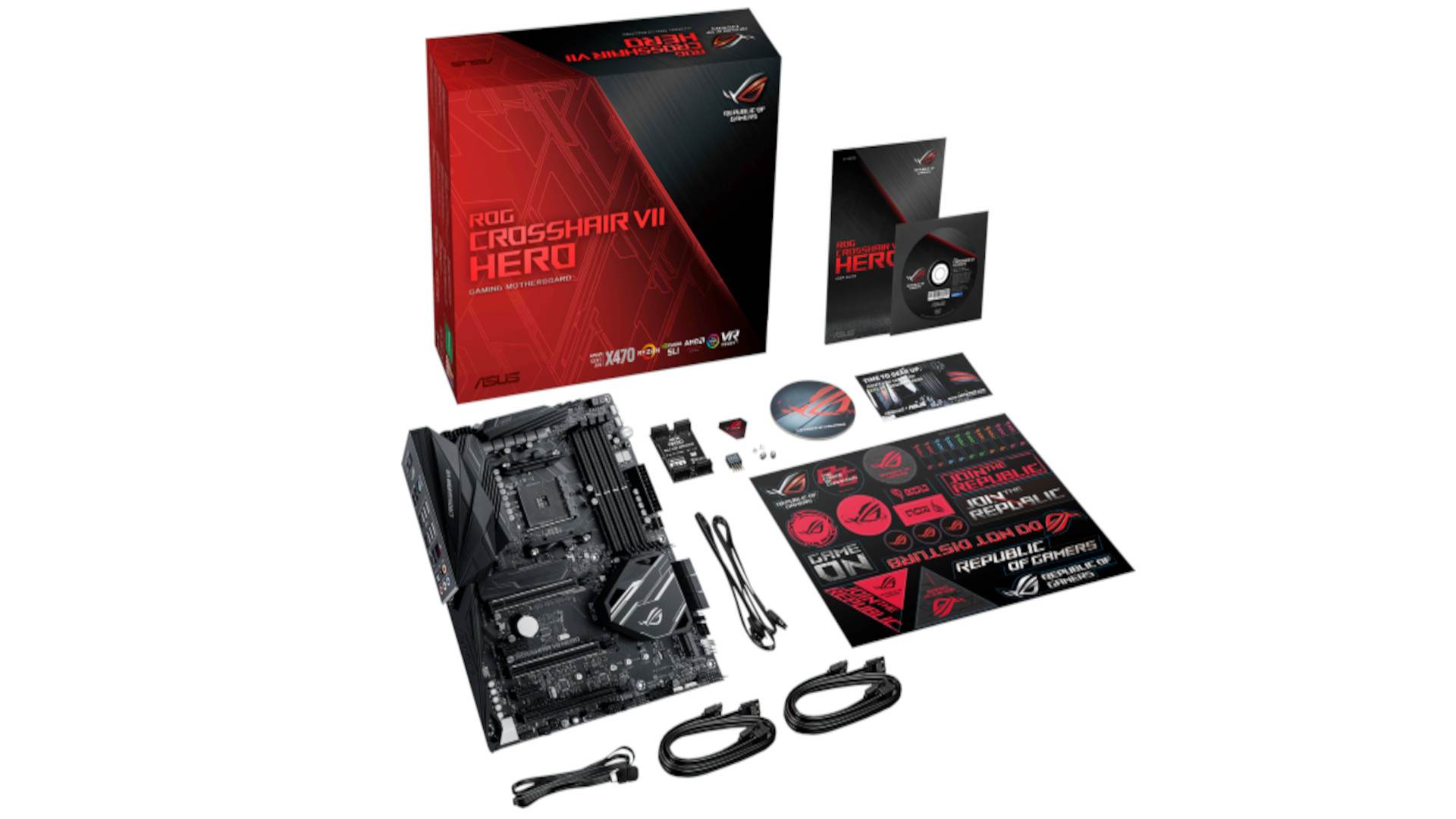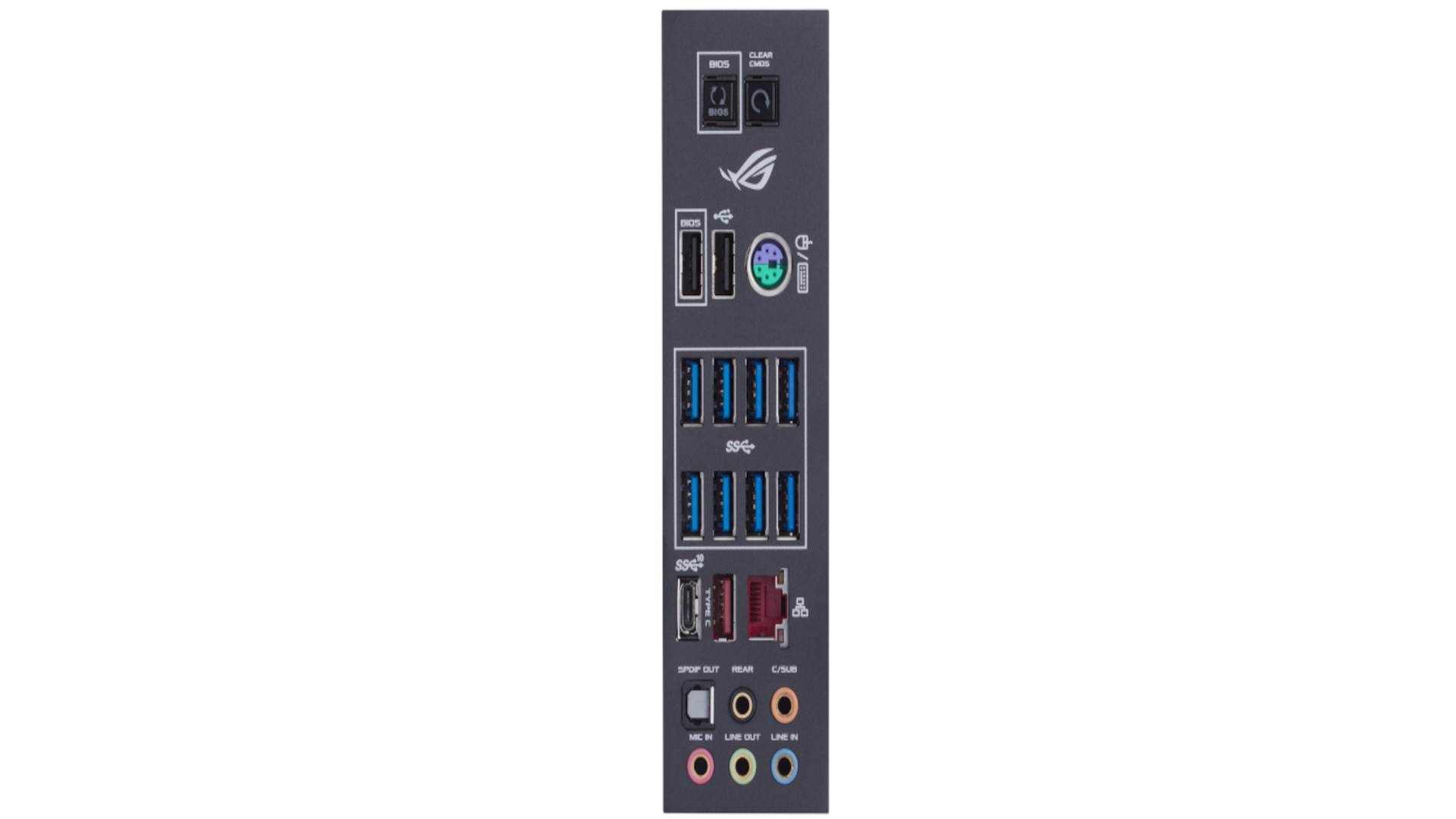One of the most expensive boards we’ve seen is the ROG CROSSHAIR VII HERO Motherboard, but its excellent design and abundance of features make it worth the price. Spend the money on this only if you are determined to get the greatest performance possible, as it is just marginally faster than competitors in benchmarking.
You expect a gadget with a ton of gaming capabilities when you purchase an Asus ROG product, and the Crosshair VII Hero delivers on that promise.
We test-drive ASUS’s brand-new, top-tier Ryzen motherboard in this post since they’ve just released the ROG Crosshair VII HERO (Wifi), which we just must review.

The motherboard serves as the foundation of any gaming setup, and ASUS has long been a leading manufacturer of high-performance motherboards. As a flagship motherboard from the Republic of Gamers (ROG) line, the ROG CROSSHAIR VII HERO Motherboard claims to provide an unmatched gaming experience. We will examine the ROG CROSSHAIR VII HERO’s features, functionality, design, and overall user experience in detail in our in-depth review.

ROG CROSSHAIR VII HERO Motherboard Design & Features
The Crosshair VII Hero has a convincing appearance. More metal is utilized to cover the back I/O and shield the audio circuits, while metallic heatsinks take up most of the left side of the board. The board is a black PCB slab with clever patterning on it, and there’s a large metal heatsink to the right of it.
Though this board is much more subdued than the Gigabyte offering, it still has the standard RGB LEDs in the two primary heatsinks. That board has extra illumination as well as orange accents all over its heatsinks.

The edges of the Crosshair are dotted with enthusiast characteristics. Power and reset buttons are located in the upper-right corner, along with a two-character POST display for issue diagnosis. There are buttons down the bottom for loading the system slowly, safe booting, and retrying the system settings while overclocking.
The enthusiast lineup is comparable to that of the competing Gigabyte device, which also features options for switching between two BIOSes and a POST display. Nevertheless, there are no power or reset buttons on the Gigabyte variant.
Even the more traditional Crosshair standard is of the highest caliber. The Asus board allows 64GB of 3600MHz memory in four slots with an installed second-generation Ryzen processor, matching the performance of the Gigabyte. With two steel-bolstered PCI-E slots operating at 8x speed, it can support two graphics cards. Additionally, there are two PCI-E x1 sockets but one PCI-E x16 slot with x4 speed.

Similar to the Gigabyte, two M.2 sockets handle storage, and the standard range of SATA connectors is provided. Furthermore, there are ten connectors for different combinations of fans, pumps, and water coolers, two RGB LED headers, and two connectors for Asus AURA light strips.
The Asus has a whopping nine full-sized USB 3.1 ports on the back in addition to a Type-C connector. Moreover, there are buttons to reload the BIOS and clear the CMOS, a PS/2 connector, and five audio jacks—all useful features. The only difference between this and the Gigabyte is that it has a few fewer USB ports.
With its accessories, Asus does not skimp. A sheet of stickers, a coaster, an Nvidia high-bandwidth SLI bridge, and a smart wifi dongle are included.
ROG CROSSHAIR VII HERO Motherboard Performance
Designed to accommodate the newest AMD Ryzen processors, the AMD X470 chipset is the brains behind the ROG CROSSHAIR VII HERO Motherboard. Because of its AM4 socket, this motherboard may be used with a variety of Ryzen CPUs, including those from the Ryzen 3000 family. A standout feature is the power delivery system, which has a strong 10+2 phase design and premium components to provide steady power delivery to the CPU even under demanding loads.
With the CROSSHAIR VII HERO, overclocking is a snap because of ASUS’s well-known UEFI BIOS interface. Both inexperienced and seasoned users may easily adjust settings and overclock their machines thanks to the user-friendly BIOS. With an active VRM heatsink and a dedicated fan for the M.2 slot, the motherboard’s cooling system is equally outstanding and keeps temperatures under control even during prolonged gaming sessions.
ROG CROSSHAIR VII HERO Motherboard Connectivity

Regarding connectivity, the ROG CROSSHAIR VII HERO Motherboard does not let you down. A wide range of connectors, including gigabit LAN, HDMI, DisplayPort, USB 3.1 Gen 2, and DisplayPort, are available on the back I/O panel. The motherboard’s adaptability is further increased by the integrated Wi-Fi, which offers consumers wireless networking convenience without compromising speed or dependability.
There are plenty of storage options, including two M.2 slots and several SATA III connectors that support fast NVMe SSDs. This enables players to customize their storage setup to meet their requirements, such as having enough room for multimedia files or quick game loads.
ROG CROSSHAIR VII HERO Motherboard Specifications
| CPU Socket | AM4 |
| Chipset | AMD X470 |
| Memory | – 4 x DIMM, Max. 64GB, DDR4 3466(O.C.)/3200(O.C.)/3000(O.C.)/2933(O.C.)/2800(O.C.)/2666/2400/2133 MHz ECC and non-ECC, Un-buffered Memory |
| Multi-GPU Support | – NVIDIA 2-Way SLI Technology, AMD 3-Way CrossFireX |
| Expansion Slots | – 2 x PCIe 3.0/2.0 x16 (x16 or dual x8) |
| – 1 x PCIe 2.0 x16 (max at x4 mode) | |
| – 3 x PCIe 2.0 x1 | |
| Storage | – 8 x SATA 6Gb/s ports |
| – 1 x M.2 Socket 3, with M Key, type 2242/2260/2280/22110 storage devices support (SATA & PCIE 3.0 x 4 mode) | |
| – 1 x M.2 Socket 3, with M Key, type 2242/2260/2280 storage devices support (PCIE 3.0 x 4 mode) | |
| USB Ports | – 8 x USB 3.1 Gen 1 ports (4 at back, 4 at mid-board) |
| – 1 x USB 3.1 Gen 2 front panel connector | |
| – 1 x USB 3.1 Gen 2 Type-C | |
| Networking | – Intel I211-AT Gigabit LAN |
| – Wi-Fi 802.11 a/b/g/n/ac, 2.4/5 GHz Dual-Band | |
| Audio | – ROG SupremeFX S1220 8-Channel High Definition Audio CODEC featuring Crystal Sound 3 |
| Form Factor | – ATX |
| Aura Sync RGB Lighting | – Customizable RGB lighting with a variety of effects, supports Aura Sync technology for synchronization with other compatible components |
| BIOS | – 256 Mb Flash ROM, UEFI AMI BIOS, PnP, DMI3.0, WfM2.0, SM BIOS 3.0, ACPI 6.1 |
| Fan and Cooling Controls | – Comprehensive cooling controls for both air and liquid cooling solutions |
| Software | – ASUS AI Suite 3, Armoury Crate, RAMCache III, ROG RAMDisk, ROG GameFirst IV, Sonic Studio III, Sonic Radar III, Overwolf, and more |
| Dimensions (L x W) | – ATX Form Factor, 12.0 inch x 9.6 inch (30.5 cm x 24.4 cm) |
ROG CROSSHAIR VII HERO Motherboard Conclusion

The most expensive board in this category is the ROG CROSSHAIR VII HERO Motherboard, but its excellent design and vast feature set make it well worth the money. Benchmarking offers just marginally better performance than competitors, so only spend money if you absolutely must have the greatest performance and will be utilizing all of the features.
ROG CROSSHAIR VII HERO Motherboard Pros:
- Exceptional Performance: The ROG CROSSHAIR VII HERO motherboard is designed for high-performance gaming and computing, featuring support for AMD Ryzen processors and the AM4 socket, delivering outstanding performance for demanding tasks.
- Memory Support: With four DIMM slots supporting up to 64GB of DDR4 RAM clocked at speeds up to 3466MHz (O.C.), the motherboard offers ample memory capacity and high-speed memory support for multitasking, gaming, and content creation.
- Multi-GPU Support: Equipped with NVIDIA 2-Way SLI and AMD CrossFireX technologies, the CROSSHAIR VII HERO motherboard allows for multi-GPU configurations, enabling enhanced gaming performance and productivity tasks.
- Expansion Slots: The motherboard features multiple PCIe slots, including two PCIe 3.0 x16 slots (operating at x16 or dual x8), one PCIe 3.0 x16 slot (max at x4 mode), and three PCIe 2.0 x1 slots, providing flexibility for adding additional components such as graphics cards, SSDs, and networking cards.
- Storage Options: Offers versatile storage options, including dual M.2 slots with support for PCIe 3.0 x4 NVMe SSDs, six SATA 6Gb/s ports, and support for RAID configurations (RAID 0, RAID 1, and RAID 10), ensuring high-speed data transfer and ample storage capacity.
- Networking Capabilities: Features Intel Gigabit Ethernet, Intel 2×2 802.11ac Wi-Fi with MU-MIMO support, and Bluetooth 4.2 connectivity, delivering fast and reliable network connectivity for online gaming, streaming, and downloading.
- USB Connectivity: Provides extensive USB connectivity with a total of 10 USB ports, including USB 3.1 Gen 2 ports, USB 3.1 Gen 1 ports, and USB 2.0 ports, facilitating easy connection of peripherals, external storage devices, and accessories.
- Audio Performance: Incorporates SupremeFX S1220 8-Channel High Definition Audio CODEC, Sonic Studio III, Sonic Radar III, and DTS Sound Unbound, delivering immersive audio experiences with high-fidelity sound and customizable audio settings.
- Form Factor: Built on the ATX form factor, the CROSSHAIR VII HERO motherboard offers compatibility with a wide range of PC cases, providing builders with flexibility in choosing their system’s design and aesthetics.
- RGB Lighting: Supports ASUS Aura Sync RGB lighting technology, allowing users to synchronize lighting effects with other compatible components and peripherals, enhancing the overall visual appeal of the system.
- BIOS Features: Equipped with advanced BIOS features such as ASUS EZ Flash 3, ASUS UEFI BIOS, and ASUS Q-Flash Plus, enabling easy system configuration, troubleshooting, and firmware updates.
- Operating System Support: Compatible with various operating systems, including Windows 10 64-bit and Windows 7 64-bit, ensuring broad software compatibility and support for the latest gaming and productivity applications.
ROG CROSSHAIR VII HERO Motherboard Cons:
- Limited PCIe Support: While the motherboard offers multiple PCIe slots, not all slots support PCIe 3.0 or higher speeds, limiting the full utilization of the latest PCIe technology for certain components.
- Price: The high-performance features and premium build quality of the CROSSHAIR VII HERO motherboard come at a relatively high price point, making it less accessible to budget-conscious users or those seeking more affordable alternatives.
- Complexity: With its extensive feature set and advanced overclocking capabilities, the motherboard may be challenging for novice users to set up and configure, requiring more technical knowledge and expertise.
- Potential Compatibility Issues: Users may encounter compatibility issues with certain hardware components, peripherals, or software applications, especially when using older or less common devices with the motherboard.
- Size Limitations: Despite being an ATX motherboard, the CROSSHAIR VII HERO’s size may not fit in smaller PC cases or compact builds, restricting its compatibility with certain form factors and chassis designs.
- Power Consumption: High-performance components and overclocking features may result in increased power consumption, necessitating a robust power supply unit (PSU) and adequate cooling solutions to maintain stable operation.
- BIOS Updates: While BIOS updates are essential for optimizing performance and addressing potential issues, users may find the process of updating the motherboard’s BIOS firmware somewhat cumbersome or time-consuming.
- Noise Levels: The motherboard’s extensive connectivity and advanced features may contribute to increased system noise levels, especially when paired with multiple high-power components or cooling solutions, requiring careful consideration of noise management strategies.
ROG CROSSHAIR VII HERO Motherboard
-
Performance - 95%95%
-
Price - 95%95%
-
Value - 95%95%

